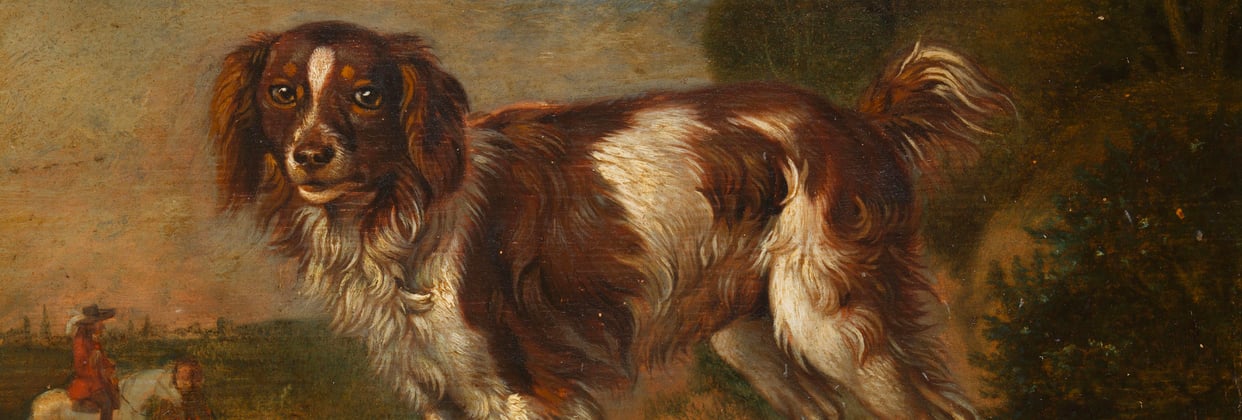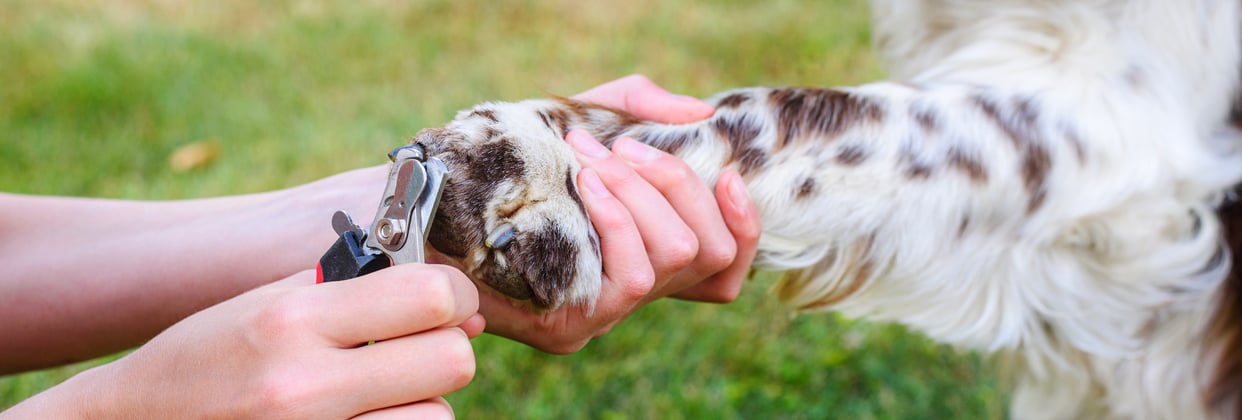The guide to owning an English Springer Spaniel.
Want to know everything there is to know about finding the right dog for you? Submit your email below, and we’ll send you a one-stop guide to help you on your pet-ownership journey.
Jump to:
Stats at a glance.
History of the English Springer Spaniel.
Meet the English Springer Spaniel – a charming dog breed with roots tracing back to the 16th century. The name “Springer” reveals how these energetic dogs would spring from cover to flush out game.
They were the ultimate all-rounder in the field—quick on their feet, eager to please, and brilliant at working long days without tiring.
Over time, their friendly nature and wagging tails won over families, turning them from field dogs into much-loved household pets.
Today, they’re just as happy chasing a ball in the park as they once were flushing pheasants in the countryside.
Curious about other Spaniels? Check out our Cocker Spaniel Breed Guide for more fun facts.


How much is an English Springer Spaniel puppy (UK)?
These playful pups can cost anywhere from £600 to £1,500, with factors like breeder reputation, kennel club recognition, and pedigree all playing a part.
If you’re thinking about adding a puppy to your family, remember that the upfront price is only part of the picture. Budget for goodies like vet checks, microchipping, and training classes, as well.
What to look for in a reputable breeder.
A trustworthy English Springer Spaniel breed club or Kennel Club breeder will let you meet the bitch (the mother) and show you health testing records, such as dna test results for conditions like fucosidosis.
They’ll also chat with you about your home setup to ensure their pups thrive. Keep an eye out for puppies available from breeders who prioritise health and temperament over quick sales.
Colours and coat types.
English Springer Spaniels have a classic, countryside charm—and their coat plays a big part in that.
The most common colours are liver and white, black and white, or liver with tan markings around the cheeks, eyebrows, and under the tail.
You’ll also spot some with ticking (little freckles) or roaning, which gives the coat a speckled look.
They’ve got medium-length coats with lovely feathering on their ears, chest, legs, and tail—especially the show lines.
Show Springers tend to have fuller, more luxurious coats with extra feathering, while working Springers usually have a shorter, more practical coat that’s easier to manage when dashing through the undergrowth.
Both types are beautiful in their own way—and yes, they do shed a bit, so a good brush now and then goes a long way.





Size and weight.
How big does an English Springer Spaniel get?
English Springer Spaniels are a lovely mix of solid and sporty—not too big, not too small, just right for most active homes.
Most adults stand around 48 to 51 cm tall at the shoulder and weigh somewhere between 18 and 25 kg, depending on things like their build, sex, and activity levels.
They slot nicely in between the daintier cocker Spaniels and the bigger retriever types.


Temperament and behaviour.
Temperament
English Springer Spaniels are known for their lively spirit, eager to please attitude, and quick to learn nature. They’re natural working dogs that thrive on human companionship and love to be involved in family activities.
Do English Springer Spaniels make good pets?
Absolutely. These loving dogs are sociable, affectionate, and easy to train, making them brilliant companion dogs for active families.
If you enjoy outdoor fun, you’ll have a blast exploring trails, playing fetch, or even participating in dog sports like agility or flyball.
Are English Springer Spaniels good with kids?
They’re typically brilliant with children. Most English Springer Spaniel owners find their dogs gentle and watchful around little ones.
However, it’s wise to supervise kids so they know how to treat your Springer kindly. Too much rough play can lead to accidents, especially around those long, floppy ears!
Are English Springer Spaniels good with cats?
With proper socialisation, these gundog pals can coexist happily with felines. They’re not as single-minded about chasing as some other hunting or setter breeds.
But every puppy is different, so take things slow and introduce them gently.


Do English Springer Spaniels suffer from separation anxiety?
They can. These dogs were originally trained to find live game alongside humans all day, so it’s no shock that they love lots of face time.
If they’re left alone too long, they might bark or chew. Helpful solutions include puzzle toys, dog sitters, or short practice sessions of alone time to ease anxiety.
Can English Springer Spaniels be left alone?
A few hours at a stretch is often fine, but leaving them longer can cause worries. They thrive in active households or with owners who work from home.
If you do need to be away, consider a trusted friend or dog walker to break up the day.
Can English Springer Spaniels live in apartments?
Yes, if their exercise requirements are met. These medium dogs can adapt to smaller spaces, but daily walks and mental stimulation are essential.
Be sure neighbours can handle the occasional bark, too as we discuss below!
Training an English Springer Spaniel.
Are English Springer Spaniels smart?
They are. These dogs are bright, trainable, and love a reward-based approach. Using treats, praise, and toys will keep your handler sessions upbeat. Consistency is key, as they’re quick to learn but can get distracted by enticing smells.
Try short, fun sessions. Focus on recall and lead training early on, as these pups are known to follow their nose. If you’re stuck, a professional trainer or health website can be a great help.


Shedding and grooming.
Springers do shed. Compared to cocker Spaniels, the English Springer’s coat can be moderate-to-heavy in certain seasons. They have extra feathering that needs weekly brushing to stay free of knots and otitis externa risk is higher if those long ears aren’t kept clean.
How often should I brush my English Springer Spaniel?
Aim for at least 2-3 times a week. Daily brushing is often best for busy or working Springer Spaniel lines that might pick up burrs or debris in their legs and tail.
Use a slicker brush for the topcoat and a comb for feathered areas. Regular trimming around the ears and feet keeps them tidy, too.


Exercise and mental stimulation.
60-90 minutes of exercise per day is a sweet spot for most English Springer Spaniel health. They excel at field trial events, retrieving toys, or jogging alongside you.
Plenty of off-lead sniffing helps keep their mind busy. If you fancy a challenge, sign your pup up for dog sports like agility or obedience trials.


Feeding and nutrition.
Portion sizes vary by age and activity, but an average adult may do well on 2-3 cups of high-quality kibble per day, split into two meals.
Watching calories is vital, as too many treats can lead to weight gain and aggravate hip dysplasia or other ligament issues.
Common health issues in English Springer Spaniels
Below is a small snapshot of possible conditions to watch out for:
Being aware of these means we can spot symptoms early. Support from your vet, good nutrition, and health schemes like screenings can make a real difference.


Pet insurance for English Springer Spaniels.
Given their active lifestyles and risk of joint issues, having cover is a lifesaver. A robust policy can protect your pup if something like acral mutilation syndrome or a nasty ligament sprain strikes.
We know you want peace of mind. At Waggel, our pet insurance offers:
Lifetime coverage for ongoing conditions
Online vet advice 24/7
No complicated forms
Money-saving Rewards for you and your pet
You can get a quote for your UK English Springer Spaniel breed at our English Springer Spaniel Pet Insurance page.
We’re here to help you and your pup live a full, tail-wagging life together. By focusing on health and temperament, consistent training, and thorough health testing, your loving Springer will be ready for a lifetime of adventures.


